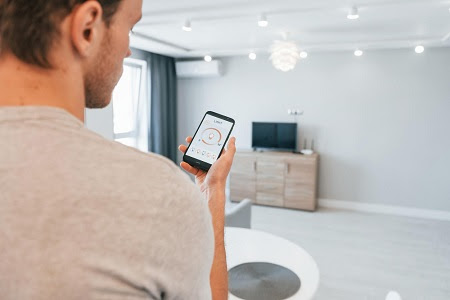Living Smarter: Decoding the Smart Home Trend and Knowing the Pitfalls
 The smart homes of today exceed even the wildest predictions of science fiction writers of a generation ago. The modern smart home is not a completely unalloyed blessing and those planning to go in for one must be aware of the negative factors. The smart home is a complex system of interconnected applications. There are not, as yet, any R2-D2s and C-3POs to respond to your slightest whim. What does exist today are systems that can take over many routine domestic functions and help to increase security. However, there are also downsides to the smart home, and knowing what they are will help in making the right decision.
The smart homes of today exceed even the wildest predictions of science fiction writers of a generation ago. The modern smart home is not a completely unalloyed blessing and those planning to go in for one must be aware of the negative factors. The smart home is a complex system of interconnected applications. There are not, as yet, any R2-D2s and C-3POs to respond to your slightest whim. What does exist today are systems that can take over many routine domestic functions and help to increase security. However, there are also downsides to the smart home, and knowing what they are will help in making the right decision.
Disadvantages of smart homes
- A smart home is one where many functions and services are connected and interconnected online. That raises the risk of hacking and security issues.
- An internet failure can cause the systems to stop.
- Installation costs could be high.
- Regular maintenance and upgrades are a part of life.
- Learning about and using all the features takes time.
- Technology is advancing rapidly and obsolescence could be a problem.
- A system failure, for any reason, could bring the home to a standstill.
Also Read: The Solatube Story
Smart Homes Make Sense
No system is ever perfect. Despite a few disadvantages, smart homes do make sense and are the way of the future. If you are considering turning your home into a smart one, the best way to go about it is to start small and gradually work your way up to a fully smart home. Get hold of all the available information and consider what is right for your needs. Once you know what you want and need, you can get started.
The Right Start
The best starting point is daylighting. Daylighting systems for buildings refer to the use of natural sunlight to illuminate home interiors. Windows and skylights allow the entry of natural light into a room during certain hours of the day. However, the amount of sunlight and the hours when it is available may not be enough. In such cases, homes have to use electric lights to supplement natural light. This pushes up the electricity bill and that in turn adds to the home’s carbon footprint, both of which are scenarios that smart homes avoid. A daylighting system uses a roof-mounted light capture device to collect sunlight through the day and then carries it, using special reflective tubing, to the interior parts of the house, where special diffusers illuminate the room.
This daylighting system uses no electricity, does not increase a home’s carbon footprint, can be left on all day and poses no safety or security issues. It is maintenance-free and the installation is quick and easy, requiring no structural modifications. In other words, this is smart daytime illumination of the home. It is the ideal way to get started on creating a smart home.
Also Read: 6 Reasons Why Your Home Should Have a Tubular Skylight
Finding the Right System
As with any technology, the best products produce the best results. That being the case, when it comes to daylighting systems, the choice begins and ends with Solatube, the world leader in daylighting. To get started, contact a Solatube dealer and get all the information you need on Solatube daylighting. You can ask for a free consultation to find the daylighting system that is right for your home and to have all your questions answered. With the key issue of daytime illumination solved, you can move on to other smart home features at your convenience.
- Jun 09, 2023
